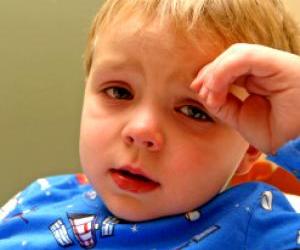
Research on fever and autism
Brian Field
Email successfully sent
close windowTwo doctors from Albert Einstein College of Medicine of Yeshiva University have published a study, published in the March 2009 Brain Research Reviews, that proposes autism spectrum disorders (ASD) may be the product of a dysregulated neuron bundle in the brain stem called the locus coeruleus-noradrenergic (LC-NA) system. Of further interest, is their observation that during episodes of fever some children with autism seemed to have improved behavior that then dissipated once the fever had subsided.
According to the study’s authors, Dr. Mark F. Mehler, M.D., chairman of neurology and director of the Institute for Brain Disorders and Neural Regeneration at Einstein and Dominick P. Purpura, M.D., dean emeritus and distinguished professor of neuroscience at Einstein, the LC-NA system is the only brain region involved both in controlling behavior and producing fever. This area of the brain is largely responsible for the production of noradrenaline, a neurotransmitter that induces our body’s “fight or flight” reaction. Noradrenaline is also a key for higher-order sensory processing of environmental stimuli, and facilitating the ability to focus one’s attention. Attentional focusing is frequently one of the deficits for those with ASD.
The cause of this dysregulation of the LC-NA system is attributed broadly to genetic and epigenetic (chemical influencers of genomes) factors, environment and also maternal stress during pregnancy. On this last point, they cite a 2008 study, published in the Journal of Autism and Developmental Disorders documenting a higher frequency of children with ASD born from mothers who had been exposed to topical storms and hurricanes mid-gestation.
While the study does not advocate inducing fever – which could be quite dangerous – they note that these findings may serve as the foundation for the development of new therapies targeting the LC-NA systems in such a way as to re-regulate how this area of the brain works. As Dr. Mehler notes, “We now have clues to the neurobiology, the genetics, and the epigenetics of autism. To move forward, we need to invest more money in basic science to look at the genome and the epigenome in a more focused way."
Related Articles
For teachers / educators
1001 Great Ideas for Teaching and Raising Children with Autism Spectrum Disorders by Veronica Zysk and Ellen N ..
Books for parents & caregivers
The Autism Sourcebook: Everything You Need to Know About Diagnosis, Treatment, Coping, and Healing by Karen S ..
For those with autism / Asperger's
The Complete Guide to Asperger's Syndrome by Tony Attwood "I usually say to the child, "Congratulat ..

